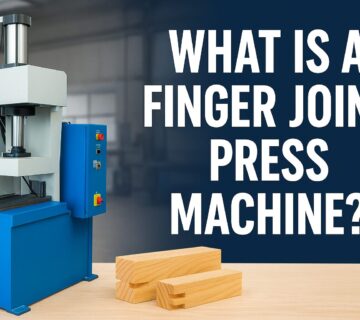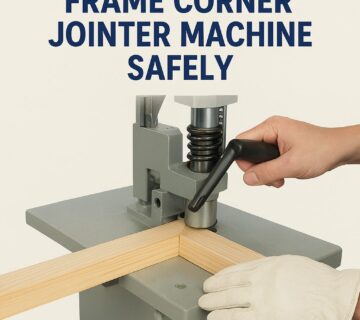The Essential Guide to Edge Banding Machines: Types, Uses, and Benefits
Edge banding is a crucial finishing process in woodworking, especially when working with materials like MDF, plywood, and particleboard. An edge banding machine is used to apply thin strips of material to the exposed edges of panels, giving furniture and cabinetry a clean, finished look. This guide explores what an edge banding machine is, its types, how it’s used, and the benefits it offers to modern woodworking.
What is an Edge Banding Machine?
An edge banding machine is a specialized tool used to apply edge bands—thin strips of PVC, wood, ABS, or other materials—to the raw edges of panels. This process not only enhances the appearance of the finished product but also protects the edges from damage, moisture, and wear. Edge banding is an essential step in the manufacturing of cabinetry, furniture, doors, and various other wood-based products.
Edge banding machines come in a range of configurations, from manual to fully automatic, and each has its own unique set of features to suit different production needs.
How Does an Edge Banding Machine Work?
The basic function of an edge banding machine involves applying glue to an edge strip and pressing it firmly onto the panel’s edge. However, modern machines incorporate multiple stages for efficient and precise application. Here’s a breakdown of the typical steps in the edge banding process:
- Feeding: The panel is fed into the machine, and the edge banding material is aligned with the edge.
- Gluing: The machine applies adhesive (usually hot-melt glue) to the edge band strip or the panel’s edge.
- Trimming: After the edge band is pressed onto the panel, any excess material is trimmed for a perfect fit.
- Finishing: Edge banding machines can also smooth the edges and polish them, giving a seamless finish.
These machines can handle straight edges, and more advanced models can even work on curves and irregular shapes.
Types of Edge Banding Machines
- Manual Edge Banding Machines
- Description: These machines require a high degree of operator input and control.
- Best For: Small workshops or custom projects where production volumes are low.
- Advantages: Affordable and easy to operate; offers flexibility for custom designs.
- Semi-Automatic Edge Banding Machines
- Description: These machines automate some aspects of the process, such as glue application and edge band feeding, but still require some manual intervention.
- Best For: Small to medium workshops with moderate production volumes.
- Advantages: Faster than manual machines and offers better consistency.
- Fully Automatic Edge Banding Machines
- Description: Fully automated machines complete the entire process from feeding to trimming and finishing with minimal manual input.
- Best For: Large-scale production facilities that require high output and consistent quality.
- Advantages: High precision, efficiency, and throughput; suitable for large batches and industrial use.
- Portable Edge Banding Machines
- Description: Small, portable machines that are easy to transport and can be used on-site.
- Best For: On-site furniture assembly or custom installation work.
- Advantages: Convenient and flexible; allows for edge banding on-site without needing large equipment.
Benefits of Using an Edge Banding Machine
- Enhanced Aesthetic Appeal
- Edge banding machines provide a smooth, polished finish to the exposed edges of panels, making furniture look professional and complete. It hides raw edges, giving cabinetry and furniture a uniform, high-quality appearance.
- Improved Durability
- Edge banding protects panels from moisture, impact, and wear, extending the lifespan of furniture, cabinetry, and panel-based products. By sealing the edges, it helps prevent chipping and reduces vulnerability to damage over time.
- Increased Efficiency
- Automated edge banding machines significantly speed up the production process, enabling high volumes of work to be completed faster and with greater consistency. This leads to higher productivity in commercial workshops.
- Versatility in Materials
- Edge banding machines can apply a variety of edge materials, including PVC, wood veneer, and ABS, making it easy to customize the finish and color to match or contrast the panel surface.
- Cost Savings
- By applying edge bands that reduce damage and extend the life of materials, edge banding can lead to lower maintenance costs and fewer replacements. The machine’s efficiency also reduces labor costs.
- Cleaner and Safer Finish
- Properly applied edge banding eliminates sharp or rough edges, making furniture safer to handle and reducing the risk of injury during transport or use.
How to Choose the Right Edge Banding Machine
When selecting an edge banding machine, consider the following factors:
- Production Volume: For high-volume production, a fully automatic machine offers maximum efficiency and output. For smaller operations, a manual or semi-automatic machine may be more cost-effective.
- Budget: Manual and semi-automatic machines are generally more affordable, whereas fully automatic machines are a larger investment but offer faster ROI for high-demand operations.
- Material Compatibility: Make sure the machine can handle the types of edge banding materials you plan to use, whether that’s PVC, ABS, or wood veneer.
- Size and Space: Portable machines can be used in smaller workshops or on-site, while large, automatic machines require more space but are ideal for a dedicated production line.
- Features: Look for features like hot-melt adhesive systems, trimming tools, polishing units, and digital controls, depending on the level of precision and automation needed.
Maintenance Tips for Edge Banding Machines
- Regular Cleaning: Clean the machine after each use to prevent adhesive buildup and ensure smooth operation.
- Lubrication: Regularly lubricate moving parts as recommended by the manufacturer to keep the machine running smoothly.
- Blade and Cutter Care: Keep cutting and trimming blades sharp to maintain edge quality.
- Calibration Checks: Periodically check calibration to ensure the machine is producing precise, clean edge banding.
- Inspection: Routinely inspect parts for wear and replace as needed to prevent downtime

